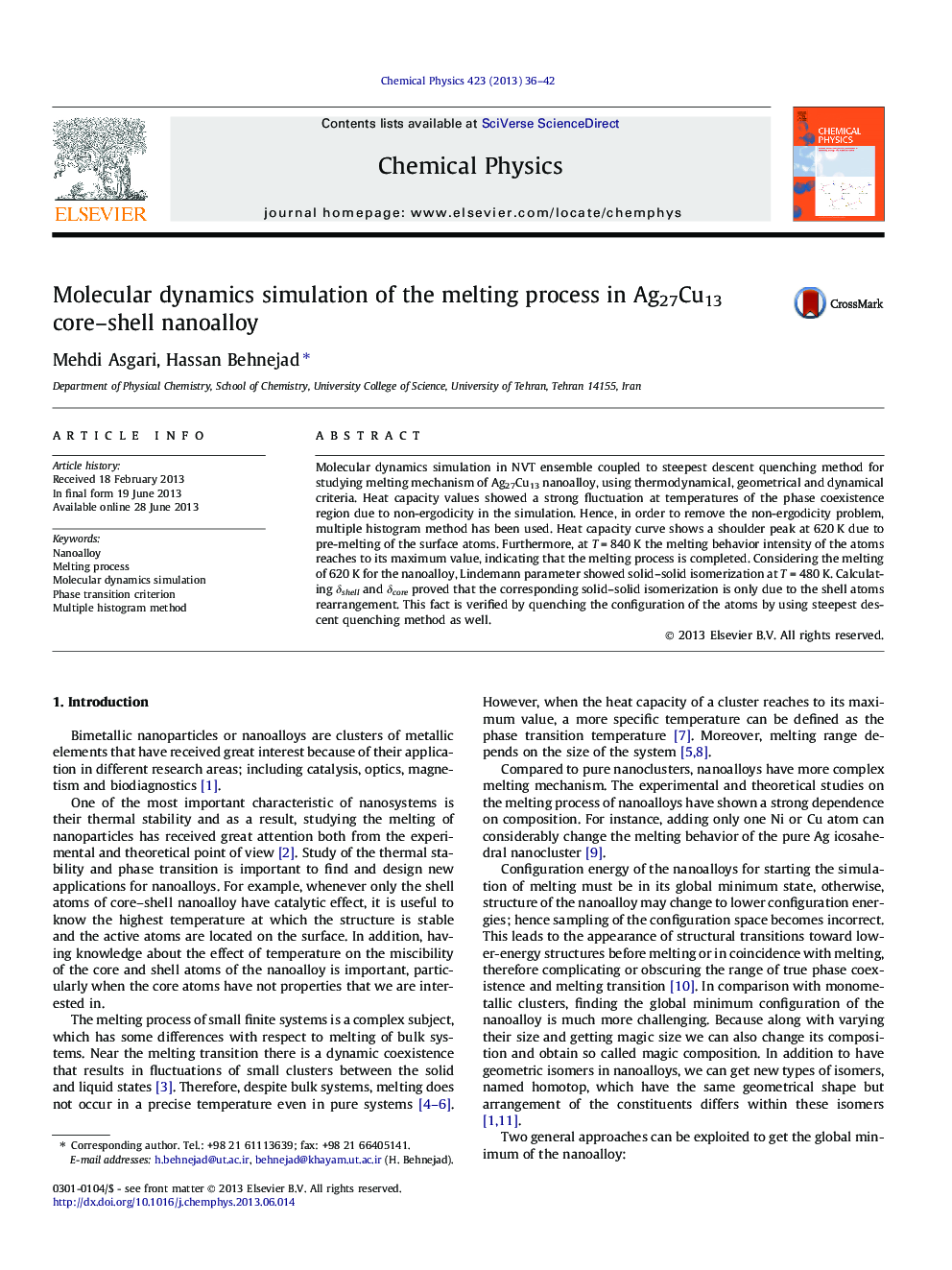| Article ID | Journal | Published Year | Pages | File Type |
|---|---|---|---|---|
| 5373799 | Chemical Physics | 2013 | 7 Pages |
â¢Melting process of Ag27Cu13 nanoalloy is studied by molecular dynamics simulation.â¢Different criteria are used to analyze thermal behavior of nanoalloy.â¢Steepest descent quenching method coupled to the isothermal MD simulations.â¢Multiple histogram method is used to remove the non-ergodicity problem.
Molecular dynamics simulation in NVT ensemble coupled to steepest descent quenching method for studying melting mechanism of Ag27Cu13 nanoalloy, using thermodynamical, geometrical and dynamical criteria. Heat capacity values showed a strong fluctuation at temperatures of the phase coexistence region due to non-ergodicity in the simulation. Hence, in order to remove the non-ergodicity problem, multiple histogram method has been used. Heat capacity curve shows a shoulder peak at 620 K due to pre-melting of the surface atoms. Furthermore, at T = 840 K the melting behavior intensity of the atoms reaches to its maximum value, indicating that the melting process is completed. Considering the melting of 620 K for the nanoalloy, Lindemann parameter showed solid-solid isomerization at T = 480 K. Calculating δshell and δcore proved that the corresponding solid-solid isomerization is only due to the shell atoms rearrangement. This fact is verified by quenching the configuration of the atoms by using steepest descent quenching method as well.
Graphical abstractDownload full-size image
